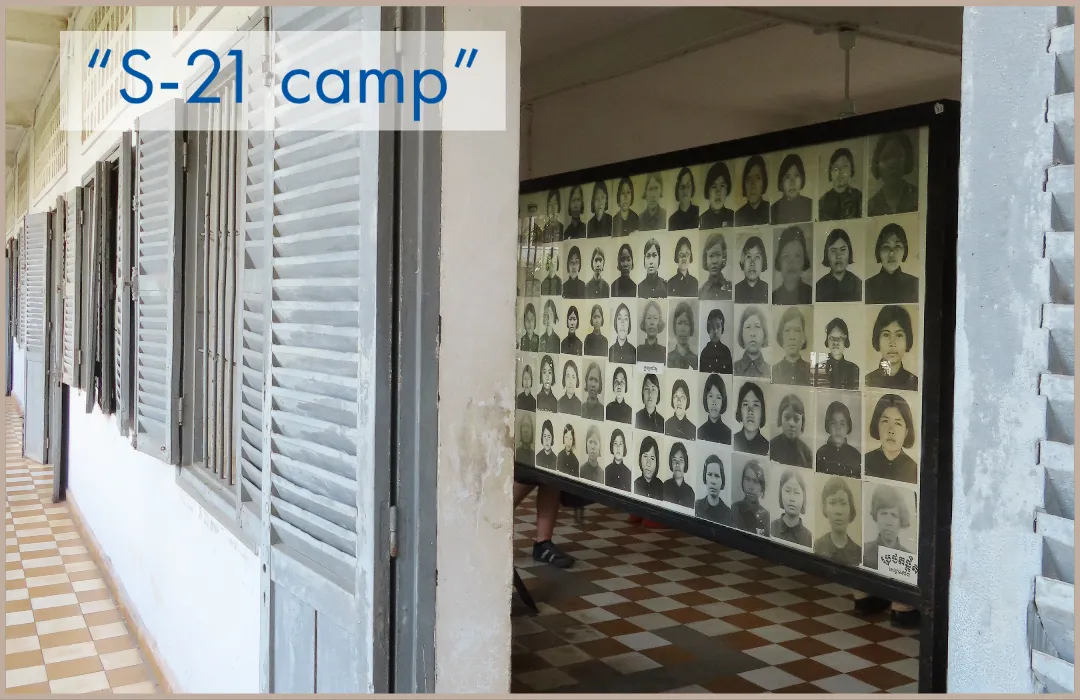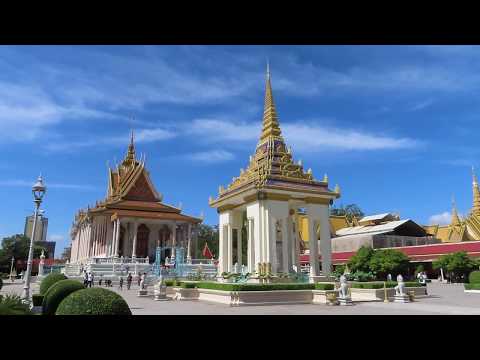
It is night time. In the distance, lights are cutting through the horizon and are contrasting with the ink blue sky. The Indochine II ship is approaching Phnom Penh. Soon, the outline of the massive buildings will become clearer. The bursting neons are bright, coloring the Mekong’s calm waters with rays of light. The motorcycles’ noisy horns and engines can be heard from afar. In the background, the beat of rock music is pulsing through the air from a rooftop. Koh Pich, the “Diamond island”, never sleeps. This tiny piece of land located in the heart of the capital and at the junction of the river’s “four arms” (the upper Mekong, the lower Mekong, Bassac and Tonlé Sap), has become the property developers’ favourite spot, the big brands’ back garden and the playground of the younger generation. This is where big 4x4s, luxury boutiques, trendy sky bars and gourmet restaurants coexist. The latter serve delicious giant river prawns, which are as delightful as they are rare. Located down a leafy avenue, the new district of Koh Pich even has a small amusement park and a perfect replica of the Parisian Arc de Triomphe. It is hard to imagine that only forty years ago, the former fishing island was just a dusty and deserted piece of land.
“Cambodia is in the middle of a vast expansion, and every year we enjoy strong economic growth”, explains Chhayavong, our guide for the day. The development of his country is the pride of this educated fiftysomething, who suffered the bloody Khmer Rouge dictatorship, from 1975 until 1979. “A nightmare that lasted for three years, eight months and 20 days”, he tells us. Chhayavong was tortured and lost his father, one of his brothers and one of his sisters who, like more than two million Cambodians, disappeared under Pol Pot’s brutal regime, one of the most terrible genocides in history. For visitors to Tuol Sleng, the sadly famous “S-21 camp”, the emotion is palpable. Between the walls of this former school, converted into a prison and now a museum, in the 1 by 2 meter cells, more than 20,000 men, women and children were detained, because they were considered “suspects”. A lot of them lost their lives in atrocious circumstances, while some were deported to the “killing fields” in Choeung Ek to be executed. The terrified, empty and cold look on their faces was immortalized [UK : immortalised] on black and white pictures pinned on the walls, like silent witnesses of this horror.


On Sihanouk Boulevard, the rider greets us in English with a beaming smile: “Tuk-tuk, Sir?”. Yes, ok for a Tuk-tuk ride. The picturesque motorized tricycle, which often serves as taxi, sets off at full speed on the streets of this metropolis. Bouncing, slaloming, coughing, it overtakes left, right and center, and would even fly if it could, finally ending our journey with one last puff of the exhaust and screeching tires outside the Royal Palace wall.

The emblematic soul of the nation, the head of state’s residence “master of land and water”, this sumptuous group of state buildings built in 1866 on the ruins of the former citadel, it symbolizes the richness of Khmer architecture. All eyes are on priceless treasures: the imposing stupas, the finely cut death monuments; the prestigious throne room, which central spear is bearing a Brahma’s head with 4 faces; Napoleon III’s pavilion, inspired by Gustave Eiffel and given as a gift to the King of Cambodia by France’s Emperor; but above all the fabulous silver pagoda, whose floor is covered in 5,329 silver tiles, home to the Maitreya statues, 90 kilos of gold encrusted with 2,084 precious stones, and the Emerald Buddha.
Away from Koh Pich’s grandness, under the heavy sun, we are taken to the central market on foot. Buzzing under its high dome roof, this, along endless crowded narrow alleys, is where the beating heart of Phnom Penh lies. What can be found on this market? The list is long: fortune tellers, Nagas and Ganesh statues, hairdressers and barbers, makeshift mechanics, Kampot pepper and coconut milk shops, coal sellers, multicoloured bamboo and cane basket-makers; kramas, typical hand-woven checked cotton scarves; carts full of fruit, cereals, spices, cane sugar juice, soup with prahok, a spice containing fermented fish, beloved of Cambodians. Last but not least, in Chhayavong’s words, here, “if it has four legs, you can eat it, unless it’s a table or a chair.” Little shops offer tender and flavorsome little toads, crispy crickets and plump silkworms to be enjoyed fried, grilled and accompanied by local beer.
The night has fallen on the city with a clammy feel. Moored at the end of the Sisovath dock, the “Phnom Penh promenade”, not far from the night market, the Indochine II ship has extended its footbridge for the Apsaras. The young group of dancers from a local orphanage, all in colorful attires, has come to offer passengers a superb traditional Khmer dance show, which used to be only for the King and his subjects. The ballet is enthralling, of exceptional purity. Every movement, every posture (there are more than 4,000!) carries a precise meaning. At the end of the show, the Apsaras walk off the stage leaving a trail of jasmine and lotus flowers, conveying messages of peace, generosity and kindness. Light and full of grace, they seem to be gliding on the surface of the water, like our ship tomorrow, which will be gliding on Tonlé Sap Lake, to continue our wonderful journey.
